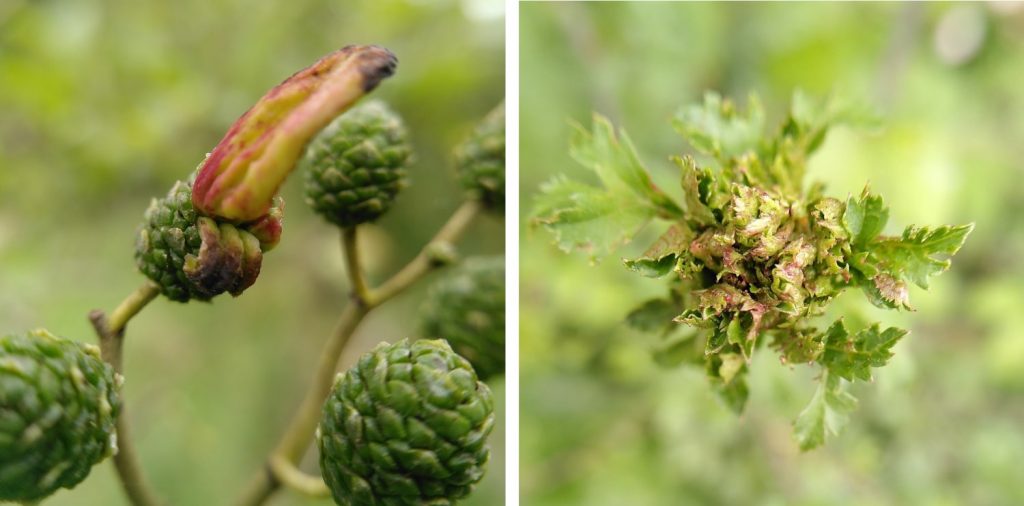RoAM Field Meeting Report for 12th September 2024
Site and Grid Reference Catcott Complex Nature Reserve ST4041
Recorders Stephen Parker and Sharon Cooper
Target Plant galls
Searched vegetation for the plant galls along Higher Ropes Drove then to Lower Ropes Drove.

A total of sixteen gal species recorded, including common species such as the leaf gall Wachtliella persicariae on Amphibious Bistort, Dasineura urticae on Stinging nettle. Alder had a series of very common species including the Alder Tongue (Taphrina alni) and Birch Besom (Taphrina betulina) galls caused by a fungi, both now frequently found across the whole of the Somerset Levels. The leaves of willows are a frequent host to insects galling the leaves. Hawthorn produced Phyllocoptes goniothorax and Dasineura crataegi on the leaves.

The caterpillar of the Hemp-agrimony Plume (Adaina microdactyla) a micro-moth creates a small exit hole on the stem of its host plant, this was found after a concentrated search of the abundant host plant. A few moth caterpillars were identified using the Obsidentify App, and Silver Y (Autographa gamma) was found resting on vegetation.
A few fungi were also seen, Fairy Inkcap (Coprinellus disseminatus) at the base of an Ash tree and very common along the Bramble was frequently covered by Violet Bramble Rust (Phragmidium violaceum). The smut Microbotryum stellariae was found on a small patch of Water Chickweed, this smut is very common on the plants later in the season.
There were small numbers of dragonflies with Migrant Hawker (Aeshna mixta) and Common Darter (Sympetrum striolatum) still very active in the warm conditions. There was a little bird activity on Catcott Lows, a small flock of Canada Geese, Mute swan. But also, the relative new comers of Great White and Cattle Egrets. A few mole hills along droves indicate this species is still very active in the locality.
All the records were entered on to SERC ORS system.
SJP 16/09/2024